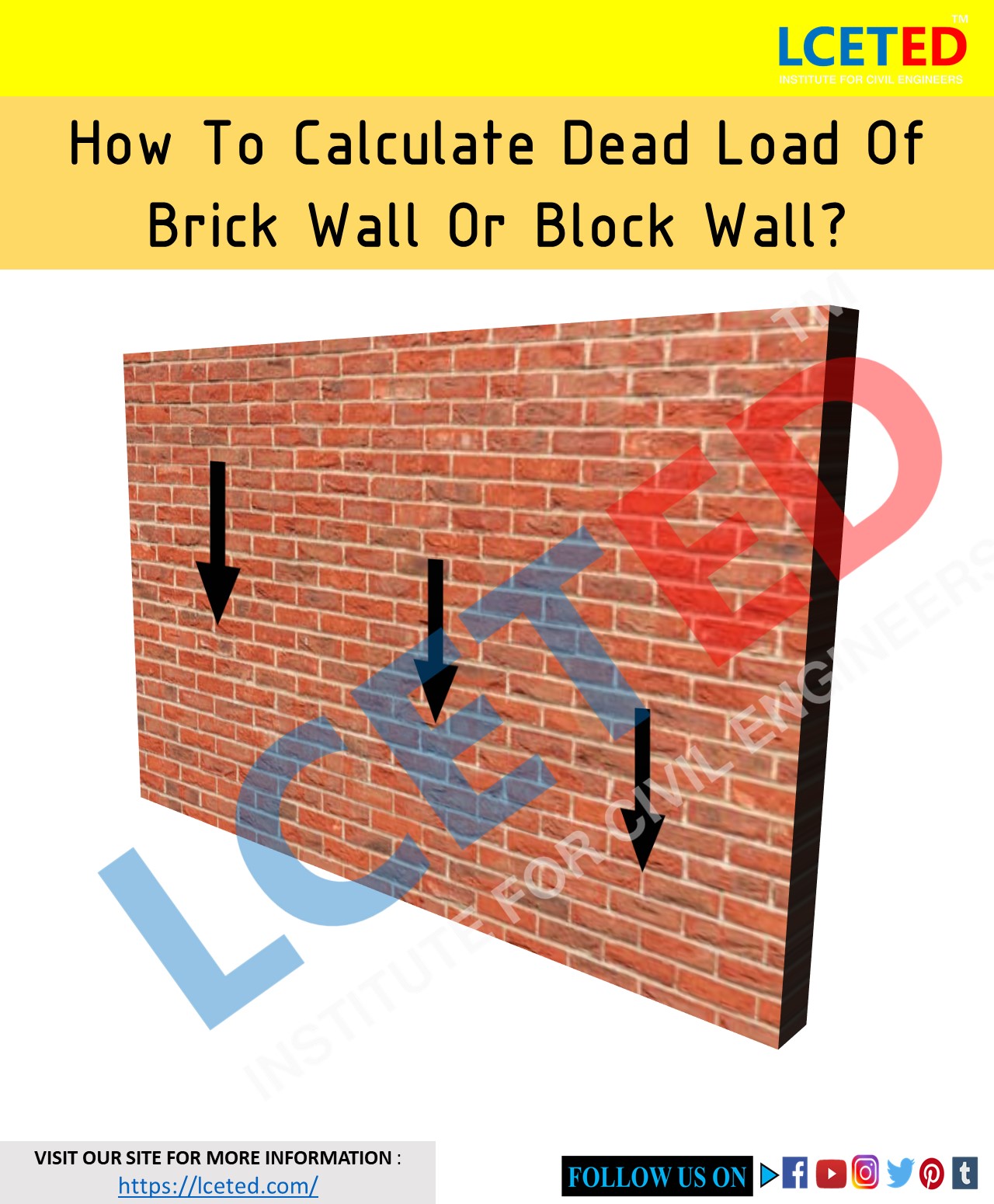Dead Load
Dead load is the
own weight of structure which include the weight of the structure, and areas
such as walls, concrete floors, or floors.
Dead loads are also called fixed or permanent loads. Building materials are not dead loads until they are built in a permanent condition.
How do you find the dead load of a building?
Dead load = volume of member x unit weight of materials
By calculating the size of each structure or element and multiplying it by the unit weight of it, can determine an accurate dead load for each component
Each country defines
the density of the different materials in specific codes. In india, it is
defined in part 1 of IS875.
How to calculate dead load of brick wall or block wall?
 |
| TEAM LCETED |
Lets We will Consider a wall measurements as,
Length of brickwall
or blockwork = 2.5 meter
Height of brick wall
or blockwork = 3 meter
Thickness of
brickwall or blockwork = 9″= 228.6mm = 0.2286
meter
The density of
the brick wall with mortar varies between 1900-2100 kg/m3
The density of the block wall with mortar varies between
Solid concrete blocks :- 1500 to 2000kg/m3
Hollow concrete blocks:- 1000 to 1500kg/m3
In block work density may
vary from each type of block we use in masonry work
We use brick work density for this calculation So we
consider self weight of brick wall is 2200 kg/m3 in this
calculation
Volume Of Brick Wall
Volume of brickwall
= l × b ×h
Length = 2.5 meter
Width = 0.2286
Height of wall = 3
meter
Volume = 2.5m×
0.2286m× 3m
Volume of brick wall
= 1.7145 m3
Dead Load Of Brick
Wall
Weight = volume ×
density
As We mentioned
early density of the brick wall with
mortar varies between 1900-2100 kg/m3
So,
Dead load = 1.7145 m3
× 1900 kg/m3
Dead load = 3257.55
kg/m
How to convert kg/m3 to kn/m3
It can be converted by dividing
kilogram per meter cube by 101.971 we will get 31.945kN/m
Must read: Design of Brick Masonry Walls - LCETED








Check the units once
ReplyDelete